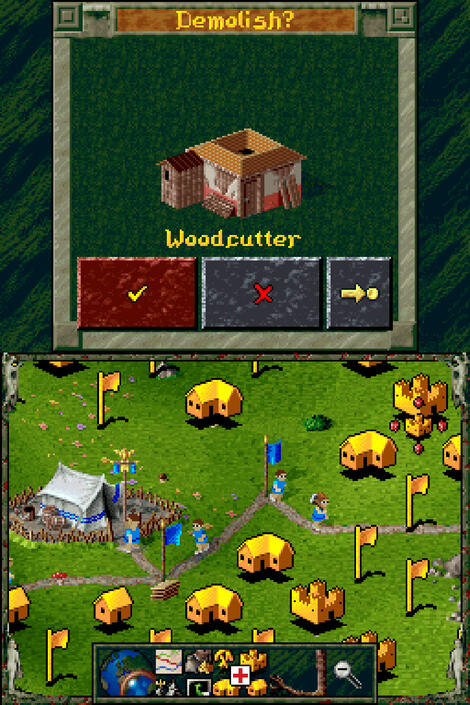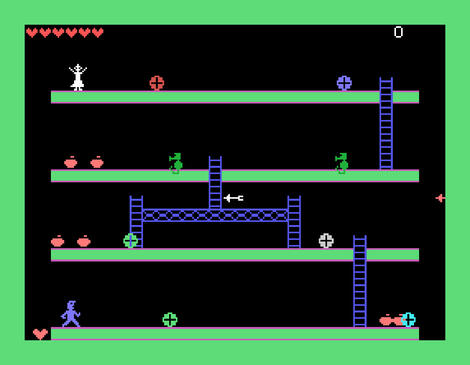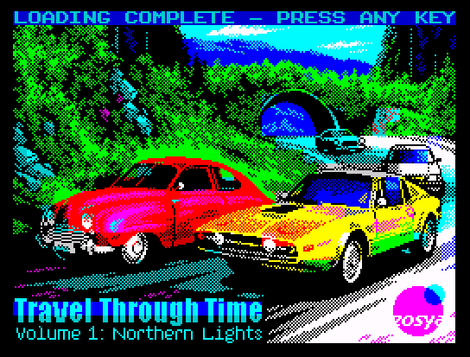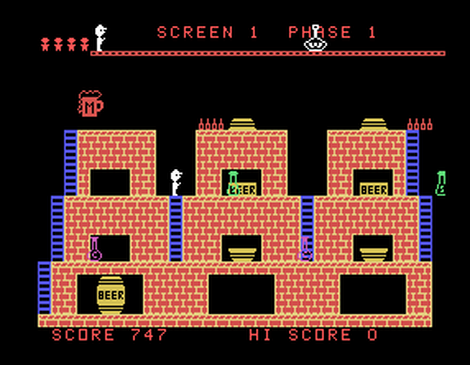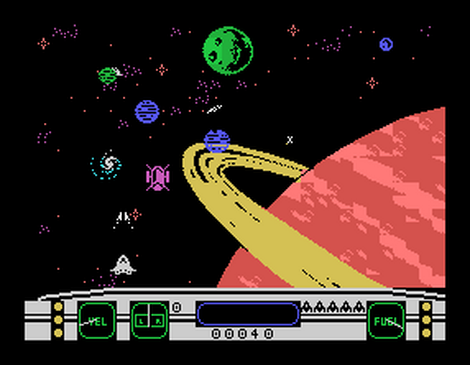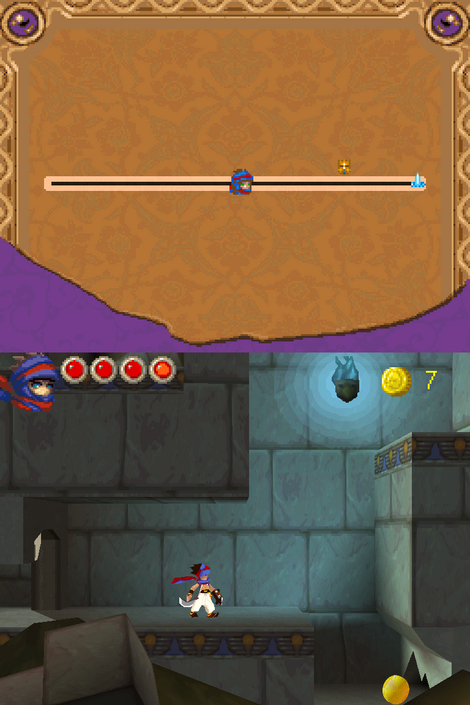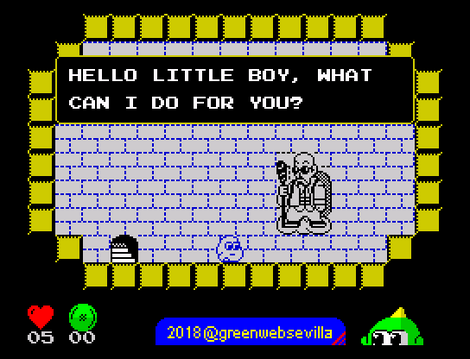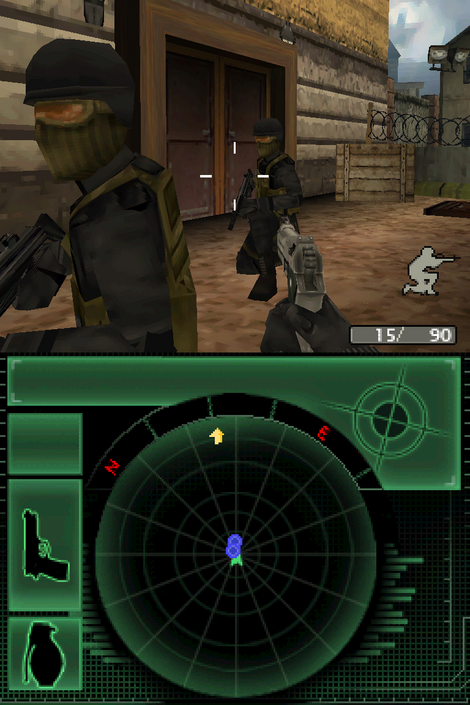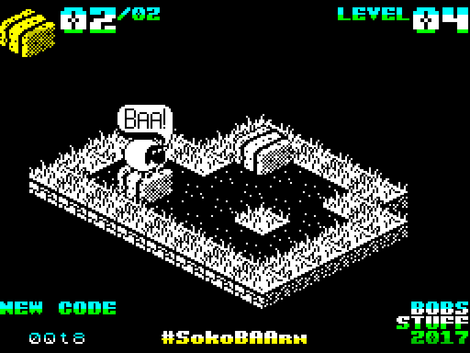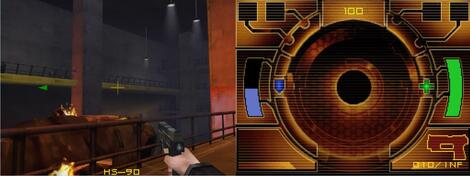Szukam ume
Faust @ 25/07/2018 23:05
Faust @ 25/07/2018 22:45
Koniec miesiąca i kolejne Mame, już MAME 0.200, okrągły numer - pierwszy od 12 lat, w sam raz na moje urodziny;) Nie trzeba było (żartuje;)).
Trochę nowości, trochę zapowiedzi ot jak zwykle w emulatorze, bez którego trudno by było sobie wyobrazić emulację maszynek arcade (pomimo wszystkie MESS zawsze uważałem, za ciekawy eksperyment... i tylko tyle).
Faust # EAB | 15/07/2018 22:53
Faust # EAB | 27/06/2018 21:13
Faust # EAB | 26/12/2018 10:37
Faust # EAB | 14/06/2018 00:32
Ukazała się nowa wersja C64 Archiv - bardzo wygodnego programiku pozwalającego zarządzać archiwami dla COMMODORE C64 (formaty D64, D71, D81, G64, P00, PRG, T64 i CRT). Programik jak większość frontendów pozwala dodawać miniaturki, podglądać zawartość plików i po szybkiej konfiguracji odpalac archiwa w jednym z czterech głównych emulatorów C64 - VICE, CCS64, HOXS64 i EMU64.
Największym mankamentem jest spory czas indeksowania plików przez program - zwłaszcza w wypadku dużych kolekcji oprogramowania na C64.
Więcej informacji o C64 Archiv można zasięgnąć w sporym artykule jaki ukazał się w 44 numerze Commodore Free (październik/10).
Faust # EAB | 09/06/2018 17:48
Nowa wersja multiemulatora BizHawk. napisany w C# multiemulator pozwala udawać konsole: Nintendo Entertainment System / Famicom / Famicom Disk System (NES/FDS), Super Nintendo (SNES), Nintendo 64, Gameboy, Gameboy Color, Super Gameboy, Sega Master System, SG-1000, Game Gear, Sega Genesis / Sega-CD, Sega Saturn, PC-Engine (TurboGrafx-16) / CD-ROM, SuperGrafx, Atari 2600, Atari 7800, Atari Lynx, ColecoVision, TI-83 Calculator, Wonderswan, Gameboy Advance, Apple II i dzięki kodowi MednaFen także Sony Playstation, emulacji Intellivision i Commodore C64. Program jest zgrabną nakładką na rdzenie poszczególnych emulatorów dostępnych jako niezależne aplikację już od dłuższego czasu.
Wersja 1.13.2 sądząc z numeracji została opublikowana dla użytkowników starych systemów - » więcej
Faust # EAB | 03/05/2018 21:49
Chyba pierwsza oficjalna wzmianka w polskiej prasie komputerowej o grach z serii Game&Watch pojawiła się właśnie w drugim numerze IKS'a z 1986 roku. Co prawda, na Polski boom na te prościutkie zabawki przyszło nam poczekać jeszcze koło 3 lat* - gdy w Polsce rozpanoszyły się rosyjskie Elektroniki przede wszystkim z grą "Wilk i Zając".
Moją przygodę z G&W rozpocząłem trochę wcześniej - dostałem gdzieś koło '87 angielską "Thief in The Garden", nasza przyjaźń była w miarę krótka i burzliwa, natomiast na tyle długa, że z pewną wyższością mogłem się parę lat później przyglądać zaciętym minom nad "Nu pogadij". G&W no fajne... ale trochę monotonne...
Skan rysunku technicznego jest dla mnie nieczytelny przy bramkach - poczeka na » więcej
Faust # EAB | 03/05/2018 21:23
Lata osiemdziesiąte, a w zasadzie środek to kulminacyjny moment, w którym Konowicz czułby się jak u siebie - nie było niczego, a jeśli już było to albo mało, albo potwornie podłej jakości. To samo tyczy się papieru, na którym drukowano magazyny, plaga czegoś o jakości papieru toaletowego i dotknęła "Bajtka" i "Komputera", nawet "Fantastyka" cierpiała w szarości makulatury.
Komputer nr 5/1986 był wydrukowany na szarym, podłym papierze - całkowicie nieadekwatnie do jego zawartości;) W tym właśnie numerze pojawiła się recenzja dwóch bardzo przyjemnych tytułów na ZX Spectrum - Robin of the Wood i Tomahawk, jeśli ten pierwszy zdobył mnie miłą grafiką i przede wszystkim świetną muzyką na spektrumowskim "bzyczku" (plus » więcej
Faust # EAB | 07/04/2018 20:22
Nowy, piąty już numer magazynu poświęconego grom dla ZX SPECTRUM - "ZX Spectrum Gamer", ekipy Sunteam - tej samej, która wydaje (a w zasadzie chyba wydawał) całkiem przyzwoity magazyn "PCEngine Gamer" poświęconemu grom dla PCEngine lub jak kto woli Turbographx16.
Odświeżono layout, powiększono zawartość a dodatkowo do numeru dołączono grę "Aeon". Warto sięgnąć.
Pliki z "ume"
- [13/05/2024 12:49] [] desmume-win-4a53a30b_x64-t2e.pl.zip
- [02/01/2024 01:04] [] [c64]_numerator_bajtek_1-1988-t2e.pl.zip
- [22/05/2023 00:52] [] desmume-win-x64_200523_7067-t2e.pl.zip
- [05/03/2023 23:36] [] desmume-win-x64_56251ca-t2e.pl.zip
- [18/02/2023 23:51] [] desmume-win-x64_180223-t2e.pl.zip
- [18/01/2023 23:40] [] desmume-0.9.11_180123-dev-t2e.pl.7z
- [11/09/2022 14:48] [] Spectrumpedia(English)-Volume2.pdf
- [11/09/2022 14:47] [] Spectrumpedia(English)-Volume1.pdf
- [25/05/2022 20:41] [] desmume-0.9.13.tar.xz
- [25/05/2022 20:40] [] desmume-0.9.13-macOS.dmg
- [25/05/2022 20:37] [] desmume-0.9.13-win64-t2e.pl.zip
- [23/05/2022 15:47] [] desmume-0913_win-x64-t2e.pl.zip
- [15/08/2020 01:38] [] Zin80_numer3.pdf
- [07/02/2020 15:53] [] Z80zine_numer_2.pdf
- [07/02/2020 15:52] [] Z80zine_numer_1.pdf
- [13/12/2018 22:03] [] appveyor_desmume_x86-x64_SVN6349-t2e.pl.7z
- [10/11/2018 00:54] [] DEV-APVEY-desmume_x86-xp-x64_SVN_08112018-t2e.pl.7z
- [19/08/2018 00:02] [] DEV-APVEY-desmume_x86xp-x64_SVN6164-t2e.pl.7z
- [25/07/2018 23:03] [] DEV-APVEY-desmume_x86xp-x64_SVN6133-t2e.pl.7z
- [14/03/2018 22:05] [] Gimmick-Spectrum-t2e.pl.zip
- [05/03/2018 21:30] [] desmume_x86xp-x64_SVN6081-t2e.pl.7z
- [05/03/2018 00:00] [] desmume_x86_SVN6077
- [07/01/2018 00:50] [] JFV1-SB-t2e.pl.zip
- [08/11/2017 22:42] [] desmume9.12GIT-t2e.pl.7z
- [30/05/2017 00:34] [] desmume_x86xp-x64_SVN5811-t2e.pl.7z
- [04/05/2017 01:32] [] desmume_x86xp-x64_SVN5801-t2e.pl.7z
- [26/04/2017 23:27] [] desmume_x86xp-x64_SVN5793-t2e.pl.7z
- [10/03/2017 00:12] [] desmume_x86xp-x64_SVN5773-t2e.pl.7z
- [04/03/2017 23:47] [] desmume_x86xp-x64_SVN5770-t2e.pl.7z
- [01/03/2017 22:23] [] desmume_x86xp-x64_SVN5757-t2e.pl.7z
Newsy
Linkownia
Emulatory na PC
Wideoteka
Screenshoty
Bajtek Reduks
Ready.Run
© Try2emu 1999 - 2024 | Krzysztof 'Faust' Karkosza Kontakt Polityka Prywatności OWU

![[NDS] DesMuMe x86/x64 0.9.12 SVN6133 21.07.18](/Photos/www/picphoto/effaf99c1.jpg,134)
![[arcade] Mame x64 i x86 0.200](/Photos/www/picphoto/f9d8c6f41.jpg,134)
![[AMIGA] Winuae 4.0.1 beta VI](/Photos//www/photo/201612/winuae-nowe-logo.jpg,134)
![[c64] Komoda & Amiga Plus 10 - en/pl](/Photos/www/photo/201812/pdf-commodore-and-amiga-plus-cover.png,470,134)
![[c64] The C64 - Archiv 4.0](/Photos/www/photo/201806/c64-commodore---c64archive-gui.png,470,134)
![[multi] BizHawk 1.13.2 [x86]](/Photos/www/picphoto/2890f6481.jpg,134)
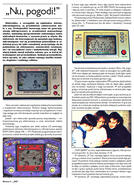
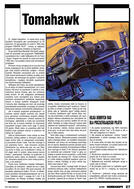
![[zx] ZX Spectrum Gamer #5](/Photos/www/photo/201804/zx-spectrum-pdf-gamer-no-5.jpg,470,134)
![[TAS] Genesis Lemmings 'all levels' by Gronkling, ccexplore & paiy in 2:51:19,86](https://img.youtube.com/vi/ujI9fDxg9Qg/0.jpg)
![[TAS] Arcade Aero Fighters 'maximum score' by PearlASE in 43:30,52](https://img.youtube.com/vi/-zV7EegYZGM/0.jpg)

![Pierwszy numer czasopisma Byte [HISTORIA KOMPUTERÓW 1]](https://img.youtube.com/vi/yQjmOmQRLks/0.jpg)

![[TAS] GC Star Wars: Bounty Hunter by the_ep1c_one in 57:29,38](https://img.youtube.com/vi/9Skg2cfO_Iw/0.jpg)



![[TAS] C64 Fort Apocalypse by nymx in 02:41,23](https://img.youtube.com/vi/xgNNPBqhlxs/0.jpg)
